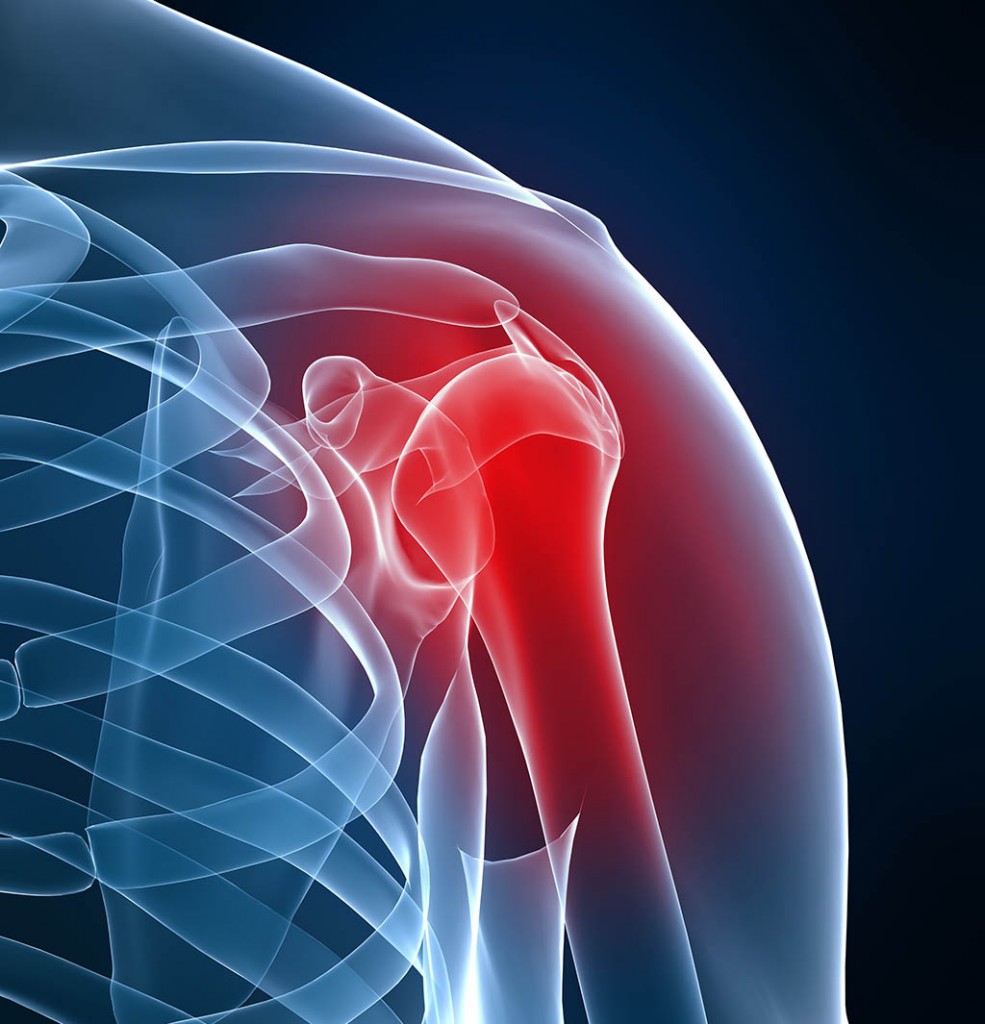The shoulder joint is the most mobile joint in the human body and therefore the most unstable. Heavy lifting, falls and repetitive overhead activities such as those performed in some sports or during manual labour, are all common causes of shoulder injury. Age, posture and genetic factors also play a major role, not only in increased injury incidence, but also in the prognosis once an injury has occurred.
The scope of this article is to exam the most common causes of shoulder pain which are: Rotator cuff disorders and Frozen shoulder.
Rotator Cuff Disorders
 These include impingement syndromes, subacromial bursitis, tendinosis/tendonitis, painful arc syndrome and rotator cuff tears. They are by far the most common source of shoulder problems and can occur to people of all ages, shapes and sizes.
These include impingement syndromes, subacromial bursitis, tendinosis/tendonitis, painful arc syndrome and rotator cuff tears. They are by far the most common source of shoulder problems and can occur to people of all ages, shapes and sizes.
Rotator cuff tears are rare in people below the age of 35, whilst the incidence increases drastically past that age group, culminating in more that 50% of people over the age of 70 showing signs and symptoms of a tear.
A term commonly thrown around related to rotator cuff disorders is “Tendonitis.” This term however can be confusing as it implies an inflammatory disorder. The correct term is “Tendinosis.”
In actual fact tendonosis implies degeneration and failure of collagen fibres due to ageing, microtrauma or vascular insufficiency. These usually develop as a result of repetitive, frequently overhead or at shoulder level, activities. Most commonly it is the tendons of supraspinatus, infraspinatus, subscapularis or the long head of biceps that affected.
Pain can usually be felt at the front of the shoulder, although in impingement cases, pain may also be referred to the shoulder’s side (lateral aspect) and even down into the elbow.
Conservative management of such conditions consists of a combination of analgesia and a patient tailored rehabilitation program. These include the use of electrotherapy modalities and supervised exercise regimes, both of which have a strong scientific basis for their use. In some cases subacromial steroid injections have shown to provide short term pain relief of patient’s symptoms.
Frozen Shoulder
 Frozen shoulder’s medical name is “Adhesive Capsulitis.” It is characterised by the spontaneous and gradual onset of pain with accompanying restriction of motion. It is a condition that is poorly understand, often misdiagnosed and one which there is no real consensus as to it’s correct management.
Frozen shoulder’s medical name is “Adhesive Capsulitis.” It is characterised by the spontaneous and gradual onset of pain with accompanying restriction of motion. It is a condition that is poorly understand, often misdiagnosed and one which there is no real consensus as to it’s correct management.
Current scientific evidence suggests the use of intra-articular corticosteroid injections during the very painful phase of the condition (months 1-3). During this acute phase, exercise programmes will often exacerbate the symptoms, an undesired effect. Conservative management during this acute phase will also include electrotherapy modalities, laser therapy and acupuncture in order to provide some pain relief.
Once the worst of the pain has settled however, the consensus is that a course of patient tailored exercises focusing on strengthening and regaining mobility of the shoulder has the greatest effect, both short and long term. During this stiffness phase, it is important to work on mobility as much as possible, in order to regain the range lost.
Usually by the 6 month mark, patient discomfort should have subsided and often no restriction in movement is reported.
 The key points to recognise in frozen shoulder are:
The key points to recognise in frozen shoulder are:
- Inability to reach a wallet in the back pocket of trousers
- Putting clothes over the head is painful
- Pushing the belt through the loops is difficult
- Inability to reach objects in higher cupboards
- Difficulty in putting on a coat/jacket.
If any of these sound familiar then physiotherapy could be of benefit to you. Where to find a physiotherapy services in Cyprus you can read HERE.












